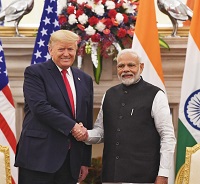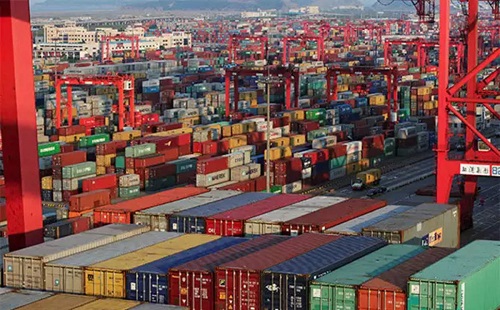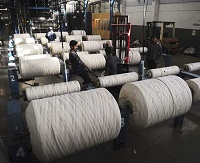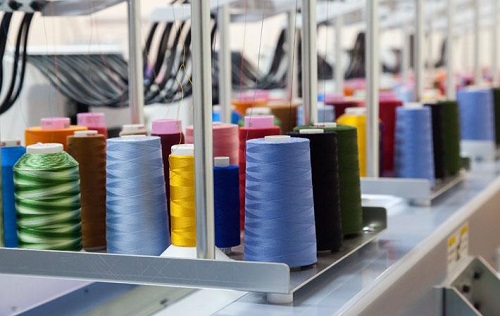FW
Gas Jeans is launching a series of retail projects to help the brand further expand. The Italian jeans specialist has just opened its first temporary store inside Roma Termini railway station and will open a few more all over Italy in the coming months.
The plan includes four more new openings, in Turin’s Porta Nuova Station and Florence’s Santa Maria Novella in January 2021, Naples Central Station in April 2021 and Milan Central Station in July 2021.
The new Gas Rome store will be visited by a significant number of visitors as the location, hosted within a shopping mall, counted 160 million visitors in pre-Covid-19 times, including residents, and counted up to 50,000 passages during the lockdown.
Gas is also involved in reopening its stores all over Italy. In the Italian Peninsula it counts a total of 32 doors: two monobrand stores, 18 concessions and 12 outlets. It will also reopen its 27 stores in Hungary, including five in Budapest, and eight doors in Czech Republic.
Ray Kelvin, the founder of troubled fashion brand Ted Baker has backed a plan to raise £95 million to avoid seeing his majority shareholding being wiped out.
The 75p-a-share raising, advised on by Goldman Sachs and Liberum, represents a deep discount to Friday’s 153.3p closing price. The shares, down 90 per cent over the last year, fell a further 10 per cent to 137p, valuing Ted at just £62 million.
The funds will be used to cut debts and help the company through the Covid crisis, with all of its 201 stores closed until at least June 15. They would allow it to invest behind its inherent strengths, which it said were a strong brand and diverse distribution via its own shops, wholesaling and licensing, as well as its wide product ranges and wide geographical spread.
Japanese sports fashion brand Descente has decided to integrate its 47 independent ‘Young Athlete’ outlets exclusively dedicated to kidswear in major department stores and malls in South Korea with its general stores.
The Japanese company entered the Korean market in 2000 and launched the ‘Young Athlete’ brand in August 2016 and opened exclusive stores for kidswear in 2018.
But the company began facing unexpected setback last year when the anti-Japanese sentiment over Seoul and Tokyo’s conflicts led to Korean consumers’ boycott movement against Japanese goods and services.
Other Japanese fashion labels are also having a hard time in the country with a double whammy from the COVID-19 shutdowns. GU, a budget brand under Japanese fast-fashion giant Uniqlo, said recently that it would pull out all of the three offline stores, in just less than two years since it was launched in Korea in September 2018. Uniqlo also shuttered 13 outlets from February to May, bringing down the number of stores in Korea from 188 to 175 as of May 29.
Copenhagen Fashion Week, CIFF, Revolver, Dansk Fashion & Textile (DM&T) and Wear have jointly decided to postpone Copenhagen fashion events to one week later than initially planned.
The events will now be held from August 09-12. One extra day will be added to the schedule in order to make also the visit of the trade shows as smooth as possible for both brands and visitors and at the same time meet regulations.
CIFF will host its CIFF Showrooms Order Days from August 2-14, giving buyers individual access to several brands located on the first and second floor.
Revolver is planning to offer a Plug and Play solution and deliver all brands the same design of rails, tables, chairs, shelves and signs. This way, the organizers want to reduce cost to a minimum for exhibitors. Booth sizes will still vary though.
Revolver will also present new digital initiatives: One is a digital calendar system that in combination with Revolver’s registration site, shall help both the trade show and the brands to control flow and traffic and also ensure that Revolver complies with any restrictions on the amount of assembly.
 Proving to be silver lining amongst the dark clouds, Facebook Inc recently announced an investment of $5.7 billion into India’s largest telecom company, Reliance Jio, instantly valuing Jio to being among the top five companies in India.
Proving to be silver lining amongst the dark clouds, Facebook Inc recently announced an investment of $5.7 billion into India’s largest telecom company, Reliance Jio, instantly valuing Jio to being among the top five companies in India.
According to the Harvard Business Review, though this deal is largely digitally driven, the year 2020 could mark an inflection point in the bilateral trade of goods between the United States and India. As Ajay Sahai, Director General and CEO of Federation of Indian Exporters believes, India being a bigger market than Vietnam or Cambodia could be a bigger draw for investors looking to move operations out of China. However, to achieve this, the country first needs to guarantee that its government will not introduce retrospective tax amendments.
A few states including Maharashtra have already ensured the functionality of their supply chains for foreign manufacturers through India’s national virus lockdown. Others like Tamil Nadu in the south and Uttar Pradesh in the north have offered concessions for those planning to move.
Mukesh Aghi, CEO, US-India Strategic Partnership Forum, a trade group India also proves to be a perfect alternative for the US as it has a large English speaking workforce,  highly skilled, the cost of labor in the country is cheap and the country is a growing market of 1.3 billion people whose disposable income is growing.
highly skilled, the cost of labor in the country is cheap and the country is a growing market of 1.3 billion people whose disposable income is growing.
Pressure on companies to decouple from China
The Harvard Business Review report reveals COVID-19 has hit supply chains of companies in US, Canada, Europe, and Australia leading to a disruption in the flow of materials from China. The CEOs of these companies have therefore asked their supply chain teams to develop additional sources that are completely independent of China. There is also a pressure from employees in the US who are wary of traveling to China and from customers who are concerned about the safety of foods and other items from the country. Even investors are worried about the country’s over-dependence on any one country, and are increasingly pressurizing companies to rapidly decouple from China.
In a recent virtual meeting with the American Chamber of Commerce in India, Thomas Vajda, Deputy Assistant Secretary for South Asia told the Economic Times that India can quickly replace China as a favorable jurisdiction for more of industrial activities.
India emerges as the hot favorite
Besides, spices, textiles, apparel, jewelry, and handicrafts that India has been traditionally exporting to the US, it now also exports helicopter cabins like that of Marine One, which was fabricated for Lockheed Martin’s Sikorsky unit in India. Besides, NASA’s Jet Propulsion Laboratory in Pasadena, California is collaborating with the Indian Space Research Organization on the most expensive imaging satellite ever to be launched. This probe will be built and launched in India and will study hazards and global environmental change more accurately than ever before.
India also plans to export Apple iPhones built in India. According to USIBC, India can supply medical devices, energy efficient green transportation, power semiconductors, switches, and rectifiers for American needs. India already provides almost 40 percent of the generic drugs sold in the United States, produced at factories inspected and approved by the US Food and Drug Administration
Stats from India’s Ministry of Commerce shows, Indian companies already export billions of dollars each in categories like furniture, medical and surgical instruments, electrical machinery, ships and boats, vehicles, boilers, parts made of plastic, steel and aluminum, organic and inorganic chemicals and more. American companies can source these goods from their Indian corporate counterparts.
India is seeking to lure US businesses, including medical devices giant Abbott Laboratories, to relocate from China. In April this year, the government reached out to more than 1,000 companies in the US and offered them incentives to move out of China. It is currently focusing on medical equipment suppliers, food processing units, textiles, and leather and auto part makers.
 With exports falling nearly 65 per cent in April 2020, the textile industry in Pakistan is on a shaky ground. Exports during the month, declined to $404 million, against exports of $11,139 million during the same month previous year. The outlook for May 2020 too is not very optimistic as nearly 75 per cent of the present installed capacity is reserved for exports and the large erosion of makes the market situation in the country quite alarming.
With exports falling nearly 65 per cent in April 2020, the textile industry in Pakistan is on a shaky ground. Exports during the month, declined to $404 million, against exports of $11,139 million during the same month previous year. The outlook for May 2020 too is not very optimistic as nearly 75 per cent of the present installed capacity is reserved for exports and the large erosion of makes the market situation in the country quite alarming.
The EU and the US are the two largest apparel markets for Pakistan. Total annual exports to these two countries exceed $10 billion. However, with COVID-19 pandemic, a large number of customers from these two regions have either cancelled orders or simply reneged their contracts. The total value of orders either being cancelled postponed amount to almost $1.3 billion. Falling prices of domestic and global yarn and cotton further add to the uncertainty in the country.
Future prospects of Pakistan’s textile industry
This situation in future is likely to lead to serious cash flow and liquidity constraints in the country. The liquidity crisis is likely to be so severe that many companies may find it impossible to maintain operations resulting in both bankruptcies and massive layoffs.
impossible to maintain operations resulting in both bankruptcies and massive layoffs.
To combat this liquidity, the Pakistani government needs to ensure liquidity/solvency of the Pakistani firms. This can be done by either increasing the national ceiling of export refinance available to the exporting firms, dropping the multiple of exports to refinance to a ratio of 1:1, restoring zero-rating with immediate effect and reducing the interest rate on export refinance to 3 per cent.
The government can also freeze interest and defer repayments for one year on all LTTF loans availed by the exporting firms. It can remove supply chain bottlenecks in order to improve competitiveness. To ease the SOP for export manufacturing operations, it can restart production on other modalities such as forward currency bookings, late payment penalties, etc. Lastly, the government can take up these cases at the ministerial and embassy levels to appeal to them or use state’s leverage to see to it that they honor their commitments and agreements.
Though recovery of Pakistan’s textile exports depends largely on the recovery of the EU and the US markets, it also depends on how serious the Pakistani government is in saving textile exports industry from being dismantled and to what extent it helps to tide over the crisis.
Zalando, the Sustainable Apparel Coalition (SAC) and Higg Co, have announced a new collaboration to accelerate a global sustainability standard in the fashion industry. Zalando is the first retailer to use the SAC’s updated version of the Higg Brand & Retail Module (Higg BRM) to make sustainability assessment mandatory for brands selling on its platform.
As part of this push toward industry-wide change, Zalando will gather comparable sustainability data from its partner brands to understand where the challenges of the industry are both individually and collectively. Higg BRM data will help Zalando identify trends and explore how to develop solutions to drive meaningful and lasting improvement in collaboration with its partner brands.
The Higg BRM is a tool that provides brands and retailers with a comprehensive way to assess their performance around ethical and environmental parameters such as human rights, fair wages or carbon dioxide emissions. Users can organise their sustainability priorities based on the results. All SAC brand and retail members will eventually use the Higg BRM to measure their sustainability performance and progress, making it possible for the apparel industry to compare sustainability at the brand level.
The SAC is the leading sustainability association for the apparel, footwear and textile industry. The coalition’s 250 global members collaborate to develop the Higg Index, a suite of five sustainability tools that assess social and environmental sustainability performance, identify areas for improvement and enable the environmental and social transparency consumers want. Higg Co develops the technology platform that hosts the Higg Index.
Carolyn B. Maloney, a member of the US House Financial Services Committee, alongwith various stakeholders introduced the Pandemic Risk Insurance Act of 2020 (PRIA). The legislation will create the Pandemic Risk Reinsurance Programme, a system of shared public and private compensation for business interruption losses resulting from future pandemics or public health emergencies.
The act would be an important step in Congress’s prevention efforts against economic losses from future pandemics by both requiring insurance companies to offer business interruption insurance policies that cover pandemics, and creating a Pandemic Risk Reinsurance Programme to ensure that there is sufficient capacity to cover these losses and protect our economy in anticipation of a resurgence of COVID-19 and future pandemics, the Congresswoman said in a statement.
Like the Terrorism Risk Insurance Act (TRIA), the federal government would serve as a backstop to maintain marketplace stability and to share the burden alongside private industry.
The Lycra Company, an innovator in the apparel industry and wool spinner Südwolle Group, have partnered to bring the ‘next level of sustainability’ and unique performance into the wool market with a ground-breaking new technology. As the first of its kind, the new GRS certified cationic dyeable Coolmax EcoMade long staple yarns can be perfectly processed with wool without compromising its unique properties.
Among the existing types of recycled polyester that can be blended with wool, Coolmax EcoMade technology distinguishes itself by its cationic dyeability. This property considerably facilitates the dyeing process in piece or cone dyeing and enables a gentler dyeing process at lower temperatures using less energy. This not only helps to ensure that the touch and handle of the wool are not impacted but is also a positive development for sustainability within this market. Furthermore, generally, a cationic dye process tends to deliver better colour and colour fastness.
The new Coolmax EcoMade fibre is the perfect partner to wool, combining the performance of uniquely engineered cross-sections of Coolmax fibres, offering better breathability and moisture management, with the natural attributes of wool,” explains Jim Sweeney, Business Development Director for The Lycra Company specialty polyester.
In order to highlight the new innovation’s unique qualities, as well as challenge the presumption that sustainable fibres compromise on performance, Südwolle blended the Coolmax EcoMade fibre with its Merino yarns to develop a range of sports and outdoor samples. They then invited several of their key customers on a winter sports weekend to launch the products.
The Lycra Company and Südwolle Group are both continuously looking at ways to improve their offerings both to address customers’ needs and for a more sustainable future and this new development highlights this commitment.
As many brands and retailers struggle to find their place amidst the COVID-19 pandemic, Asos Marketplace is seeing a surge in brand, traffic and sales growth.
Launched in 2010,the marketplace has become as a way to connect Asos’ global audience with small brands selling vintage and independent fashion, has only become more relevant over the years. At the height of the global lockdown in April, the marketplace onboarded more than 80 new independent brands—a 100 percent increase from the year prior. The company waived its monthly $25 subscription fee for new and existing retailers to further support independent fashion during the unprecedented times.
Along with being a source for rare vintage denim, the marketplace has also seen an increase in year-on-year sales and customer traffic during the pandemic, specifically around loungewear. Year-on-sales in April increased 421 percent for sweaters, 119 percent for women’s hoodies and 166 percent for sweatshirts.
Customers have also been taking the opportunity to stock up on socks, particularly trendy tie-dyed versions, with sales up 1,418 percent compared to last year.
Support from global digital entities can be a savior for independent brands and retailers, which have especially been struggling as a result of store closures, high unemployment rates and inadequate loan programs. Small retailers have noted that support from alternative sources and partnerships that has been invaluable throughout the pandemic.












